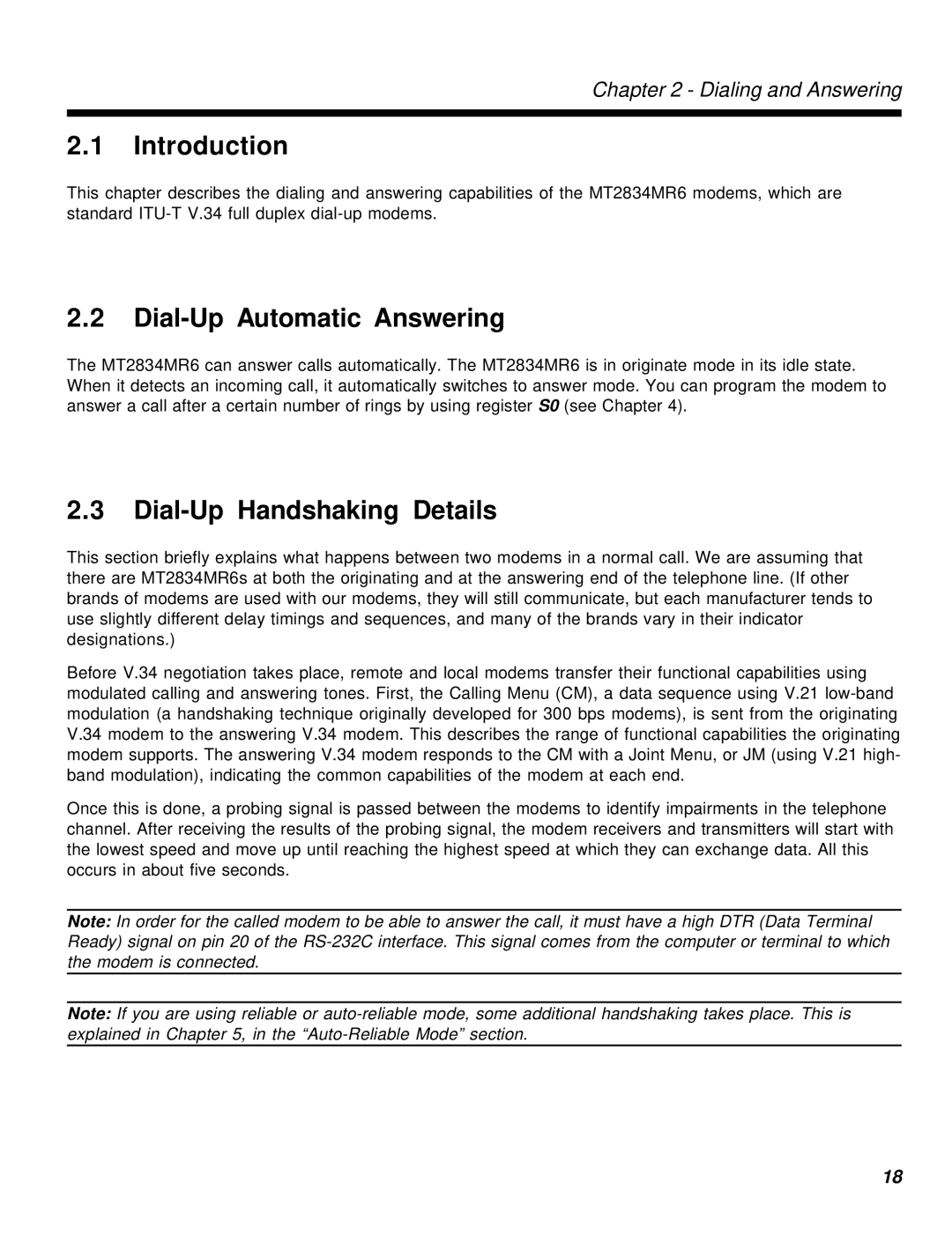
Chapter 2 - Dialing and Answering
2.1Introduction
This chapter describes the dialing and answering capabilities of the MT2834MR6 modems, which are standard
2.2Dial-Up Automatic Answering
The MT2834MR6 can answer calls automatically. The MT2834MR6 is in originate mode in its idle state. When it detects an incoming call, it automatically switches to answer mode. You can program the modem to answer a call after a certain number of rings by using register S0 (see Chapter 4).
2.3Dial-Up Handshaking Details
This section briefly explains what happens between two modems in a normal call. We are assuming that there are MT2834MR6s at both the originating and at the answering end of the telephone line. (If other brands of modems are used with our modems, they will still communicate, but each manufacturer tends to use slightly different delay timings and sequences, and many of the brands vary in their indicator designations.)
Before V.34 negotiation takes place, remote and local modems transfer their functional capabilities using modulated calling and answering tones. First, the Calling Menu (CM), a data sequence using V.21
Once this is done, a probing signal is passed between the modems to identify impairments in the telephone channel. After receiving the results of the probing signal, the modem receivers and transmitters will start with the lowest speed and move up until reaching the highest speed at which they can exchange data. All this occurs in about five seconds.
Note: In order for the called modem to be able to answer the call, it must have a high DTR (Data Terminal Ready) signal on pin 20 of the
Note: If you are using reliable or
18
